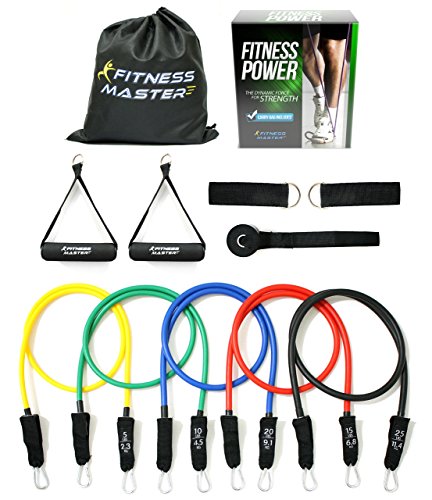It’s easier to work a few hours, then wait in line for your nuts and berries, than it is to go out hunting and gathering for them (that’s two things! That’s one thing too many). Unfortunately, the berry salesmen learned that — rather than actually offering better berries than the next guy — it’s easier to get a neon sign that lies and says you do. Some of those neon signs have become so ingrained in our culture, we simply accept them as fact. Despite …
6
“Kills 99.9 Percent Of Germs” Still Leaves Surfaces Germ-Filled And Dangerous
“Kills 99.9 Percent Of Germs” Still Leaves Surfaces Germ-Filled And Dangerous
What we think it means:
This product is like Attila The Hun to germs. It not only annihilates 99.9 percent of all germs, it spares the life of a crucial 0.1 percent so they can warn distant relatives about the horror that awaits them, should they be foolish enough to invade your house again.
 AlexRaths/iStock
AlexRaths/iStock
“Go on. Tell them of the Great Sink Massacre.”
What it actually means:
This product was once used to execute a population of defenseless germs in a laboratory setting. While it may have killed 99.9 percent of whatever germs the lab techs decided to trot out into the Petri dish that day, those results don’t necessarily translate to the real world. A recent study of hand sanitizer brands showed that when used in a real-world environment, that number can fall to as low as 46 percent.
And the 99.9 percent of germs killed in the lab probably weren’t a representative sample of the germs you’re actually worried about. After all, they were weak enough to be captured by human scientists. Hand sanitizers are unlikely to work on the dangerous pathogens that are cause for true concern, like E. coli.
 luchschen/iStock
luchschen/iStock
What, your family doesn’t eat out of Petri dishes?
Thankfully, there is one futuristic cleaning product that actually does do away with most household germs for a fraction of the price of hand sanitizer: good old soap.
5
“Nine Out Of 10 Experts Recommend” Can Be True Of Multiple Competing Products
“Nine Out Of 10 Experts Recommend” Can Be True Of Multiple Competing Products
What we think it means:
It’s easy to fool the layperson with outrageous claims and fancy packaging. But you can’t fool the experts, can you? If 90 percent of all the experts in a field recommend something, who are we to disagree? We’re just poor fucking laypeople.
What it actually means:
They managed to find nine people to recommend their product who they could also label “experts,” and then threw in one more so it didn’t look like they were faking the whole thing. And even that very low bar comes with quite a few caveats.

First: Many of those experts helped to develop and sell products for those very companies. Dentists, for instance, often help to develop the toothpastes that nine out of 10 dentists recommend. And they’d be out a nice side income if they couldn’t help develop a product that met their own standards.
But even when the experts aren’t being paid by the company in question, the claim provides no context for the expert opinion: We may picture dentists systematically testing assorted toothpastes in a rigorous battle-royale of tooth protection, but in truth, it’s more likely to be just a survey of the dentists who decided to attend the product launch conference.
 LuckyBusiness/iStock
LuckyBusiness/iStock
“I didn’t really try this one yet, but they gave me a tote bag.”
Even more embarrassing: The experts surveyed are often allowed to recommend more than one toothpaste. Maybe they just recommend toothpaste in general. These tricks are how multiple brands in the same space can all claim to be the one experts recommend. Incidentally, this website indicates actual toothpastes recommended by the American Dental Association, which you may recognize as a list of pretty much every toothpaste not manufactured in a bathtub.
4
“Genuine Leather” Is A Frankenstein Monstrosity
“Genuine Leather” Is A Frankenstein Monstrosity
What we think it means:
“Genuine leather” lets you know you’re getting the good stuff. Not that “disingenuous leather,” always smiling to your face and then talking shit behind your back. We’re looking at you, impulse-bought Axl Rose pants.
What it actually means:
Calling a jacket “genuine leather” is like calling hot dogs “genuine meat.” Sure, a real cow died at some point during the manufacturing process, but filet mignon, it is not. It’s a bunch of low-quality scraps glued together, then painted to look nice and natural.

The more expensive cuts of leather are labeled top-grain, or full-grain, and include both layers of the animal’s skin. Genuine denotes that the leather you’re buying isn’t either of those, and is therefore made from only the shoddier, undesirable parts. But the industry needed a more appealing descriptor than “crap leather,” and came up with “genuine” to conceal the fact that they’re selling you leftovers.

3
“Cruelty Free” Only Means Locally Cruelty Free
“Cruelty Free” Only Means Locally Cruelty Free
What we think it means:
For the most part, animals don’t enjoy animal testing. And since it’s a pretty outdated method that doesn’t really need to be done, some companies market their products as “cruelty-free.” Naturally, this means they don’t test their products on animals, unless a rabbit is going out with mismatched foundation — in which case it would be crueler not to intervene.
What it actually means:
Back in 2012, the companies Estee Lauder, Avon, and Mary Kay were involved in a lawsuit for $100 million over claims that their products were “animal-testing free.” And they were able to get away with that for so long because they don’t test on animals … in America.

Some countries, like China, mandate animal testing by law, so anyone who wants to be a big international player (such as Avon, Mary Kay, and Estee Launder) basically has to test on animals, or forego a huge market. Worse, “cruelty free” typically only applies on the product level, not on the ingredient level. That means companies are free to subcontract out their animal testing, or use ingredients tested on animals — so long as they don’t do it themselves.
The sad part is, animal testing is probably worse for everyone involved. Modern testing has gotten to the point where we don’t need to use animals at all. Artificial skin and 3D models have proven to be not only far more effective, but much less expensive, too.

2
“Scientifically Proven” Requires Neither Science, Nor Proof
“Scientifically Proven” Requires Neither Science, Nor Proof
What we think it means:
These companies have poached the top scientific minds from NASA and Princeton, made them stop whatever stupid bullshit they were working on, and set them to the task of finding out whether or not this skin cream reduces wrinkles. And it does: you can’t argue with that. It’s motherfuckin’ scientifically proven.
What it actually means:
Much of the “scientific” evidence behind these corporate claims turn out to be based on mostly fraudulent studies. Take Dannon’s Activia yogurt for example. We all know it as the yogurt your grandmother bought in bulk from Costco because it was “scientifically proven” to be healthy for your digestive tract. Dannon had to pay $45 million in a class-action lawsuit after the clinical study supporting their claim was debunked by numerous other studies, including one by the Mayo Clinic.

ExtenZe, a “male enhancement” drug, claimed that their product promoted “enhanced sexual pleasure” and said that penis enlargement was a clinically proven guarantee. Their claims were supported by “peer-reviewed” doctor Daniel S. Stein, who actually hadn’t had anything published in peer-reviewed medical journals, but for all we know might have actually been reviewed by other fake doctors, his real peers. They were hit with a lawsuit and forced to pay $6 million to settle the false advertising case.

The world of weight-loss products is so rife with false claims that the Federal Trade Commission launched a campaign to crack down on them, called “Operation Failed Resolution.” Oooh, sounds like someone at the FTC has a particular axe to grind with the industry.
1
“Helps Reduce,” “Helps Control,” And “Improves” All Mean Nothing
“Helps Reduce,” “Helps Control,” And “Improves” All Mean Nothing
What we think it means:
If a product “helps” with weight loss, we expect it to actually contribute to its users losing weight. Just like how a hockey player who assists with a goal was an integral, if unsung, part of that goal.
What it actually means:
Products “help” you with a goal in the same way your drunken cousin “helps” you move. These words only serve to make any health claims just ambiguous enough that their parent companies won’t see the business end of a class-action lawsuit. Maybe you’re an ice cream manufacturer, and you claim that your ice cream helps reduce violent uncontrollable rage. “Yeah, who doesn’t like ice cream? It probably does help reduce manslaughter.” That’s the logic.

New Balance was caught making such a claim back in 2011, stating that just wearing their shoes helped people to lose weight and improve their health. They claimed that their product “uses hidden balance board technology that encourages muscle activation in the glutes, quads, hamstrings and calves, which in turn burns calories.” In fact, they were selling regular sneakers and adding a very helpful, “if you exercise regularly, you’ll lose weight, but also buy our shoes, please.”
In 2010, Kellogg was hit with two separate legal actions over their “helpful” ad copy. In June, they were reprimanded by the FTC for claiming that Rice Krispies helped improve children’s immune systems through the use of vitamins, A, B, C, and E. And this was just a couple months after they had been sued over their claim that Frosted Mini-Wheats helped children become more attentive, by up to 20 percent. When the FTC dug into their so-called clinical trials, they discovered that very few children — about one in seven — actually saw the benefits Kellogg claimed. Under the threat of heavy fines, Kellogg promptly dropped the claims and presumably their advertising team.

There’s no official rubric for these kinds of statements. Even if we’re all clear on what counts as sufficient clinical evidence for a claim, the rules about false advertising are opaque at best. The standard of proof for claims of false advertising is that any average Joe could fall for it. But that isn’t easy to figure out either, because exaggeration is so common in advertising. That means the huge, obvious lies aren’t actionable, while the smaller lies are, because someone might actually fall for those.
9 out of 10 users* follow Dibyajyoti Lahiri on Twitter. You should too.
Fore more “facts” that are utter garbage, check out The 6 Most Frequently Quoted Bullshit Statistics and 5 Bullshit Facts About the Brain That Everyone Believes.
Subscribe to our YouTube channel, and check out 7 Bizarrely Specific Ways Movies Get Normal Jobs Wrong, and other videos you won’t see on the site!
Follow us on Facebook, and we’ll follow you everywhere.
If we’ve ever made you laugh or think, we now have a way where you can thank and support us!
Read more here: http://www.cracked.com/




